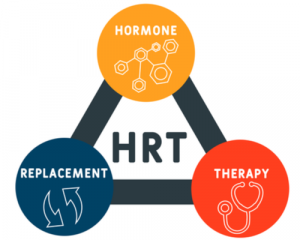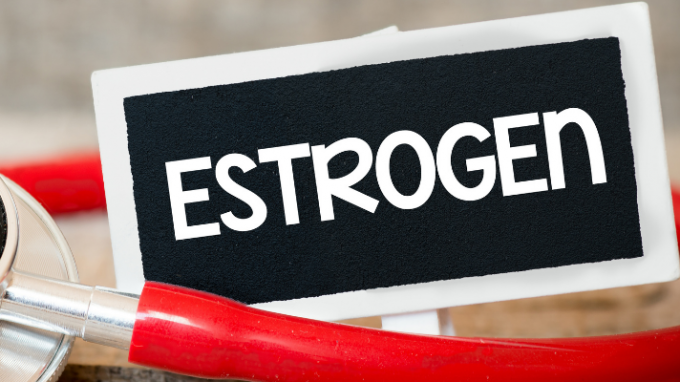One of the most important and well-known female sex hormones is estrogen. This is a steroid hormone that acts as both a growth factor and a signaling molecule. It is responsible for developing and regulating female sexual characteristics, including the growth and function of reproductive organs. The role of estrogen in female fertility is twofold. First, it is necessary for ovulation to occur. Second, it is important for maintaining the health of the uterus and endometrium (the inner lining of the uterus). If its levels are too low, ovulation may not occur, and if the uterine lining is thin, it may be difficult for a fertilized egg to implant.
Types of Estrogen
There are three major types of estrogen: estrone (E1), estradiol (E2), and estriol (E3).
- Estradiol (E2): Estradiol is the most potent form of this hormone. It is produced by the ovaries and is responsible for the development and maintenance of reproductive tissues.
- Estriol (E3): Estriol is the weakest form of the fertility hormone. It is produced by the placenta during pregnancy and is thought to protect the fetus from damage caused by other forms of this hormone.
- Estrone (E1): Estrone is produced by the body’s fat cells and is responsible for maintaining the health of reproductive tissues in post-menopausal women.
Factors That Affect Estrogen Levels
Several factors can affect estrogen levels, including age, diet, exercise and stress.
- Age: The hormone’s levels decline as women age. This decline can lead to symptoms such as hot flashes, night sweats and vaginal dryness.
- Diet: Its levels can be affected by the type of food that a woman eats. For example, foods high in fat can increase the level of estrone (E1) in the body.
- Exercise: Exercise can increase the level of this hormone in the body. This is because exercise increases the production of certain hormones, including estrogen, responsible for fat breakdown.
- Stress: Stress can decrease the level of the reproductive and fertility hormone in the body. This is because stress hormones, such as cortisol, can interfere with the production of estrogen.
- Environmental Pollutants: Some environmental pollutants, such as certain pesticides, can act like estrogen in the body. This is called xenoestrogen activity and can interfere with hormone production, resulting in lower estrogen levels.
Ways of Boosting Estrogen Production
 Hormone Replacement Therapy: Hormone replacement therapy is a treatment used to increase the level of this reproductive and fertility hormone in post-menopausal women. This therapy involves taking estrogen-based supplements or wearing estrogen-related patches.
Hormone Replacement Therapy: Hormone replacement therapy is a treatment used to increase the level of this reproductive and fertility hormone in post-menopausal women. This therapy involves taking estrogen-based supplements or wearing estrogen-related patches.- Phytoestrogens: Phytoestrogens are plant-based compounds that can mimic the effects of this hormone in the body. For example, soy isoflavones, a type of phytoestrogen, have been shown to improve the symptoms of menopause. These isoflavones can be taken in supplement form or found in soy products such as tofu and soy milk.
- Folic Acid: Folic acid is a vitamin that is important for the development of the fetus. Folic acid is also necessary for the production of estrogen. Women who are low in folic acid may have lower levels of this fundamental hormone. Folic acid can be found in leafy green vegetables, legumes and nuts.
Functions of Estrogen
This hormone is responsible for several important functions in the body, including:
It is necessary for the development and maintenance of reproductive tissues such as the uterus, cervix, vagina and fallopian tubes. Also, it stimulates breast tissue growth. Without it, these tissues cannot function properly.
Without this hormone in post-menopausal women, bones can become thin and brittle. It helps protect against bone loss by increasing the absorption of calcium from food and slowing the rate of bone breakdown.
Estrogen is thought to improve the lipid profile by increasing HDL cholesterol (the “good” cholesterol) and decreasing the LDL cholesterol (the “bad” cholesterol). Also, it increases the production of nitric oxide, which promotes healthy blood vessel function.
It is also responsible for the development and maintenance of the menstrual cycle. It stimulates the thickening of the uterine lining, which is necessary for a successful pregnancy. If its levels are too low, periods can become irregular or stop completely.
Estrogen is vital for the changes that occur in a woman’s body during pregnancy. These include breast enlargement, gaining weight in the hips and thighs, and increased fat distribution throughout the body. It also helps to maintain the fetus during pregnancy by stimulating growth and development. After birth, it causes the uterus to return to its original size. This hormone is also important for the production of breast milk. It stimulates prolactin production in the pituitary gland, which then triggers milk production in the mammary glands.
Estrogen is a female sex hormone that plays an important role in female fertility. Other hormones, such as progesterone and FSH, are also necessary for conception to occur. It can be produced naturally by the body or be introduced through hormone replacement therapy. Eating healthy foods rich in phytoestrogens, folic acid or soy isoflavones can also increase its production.




